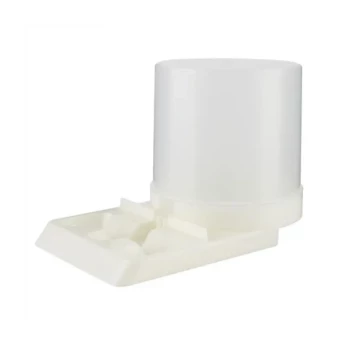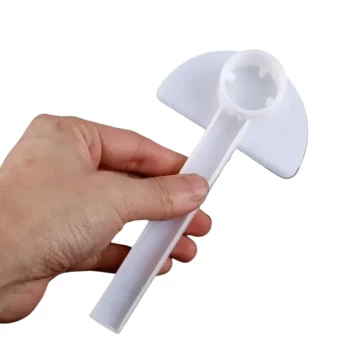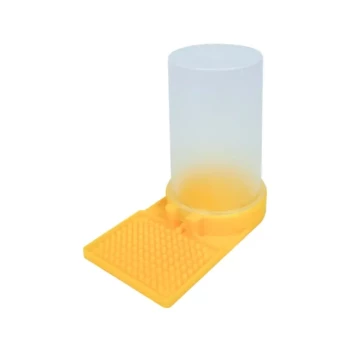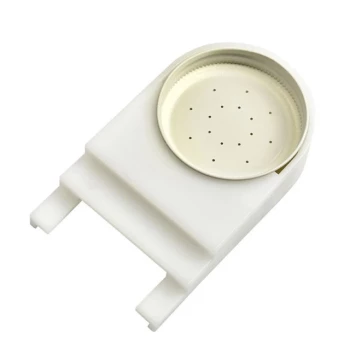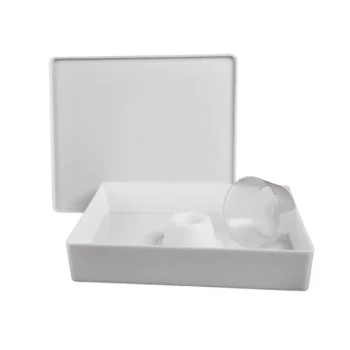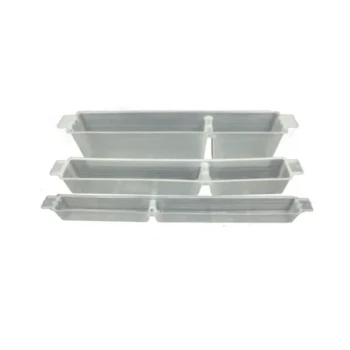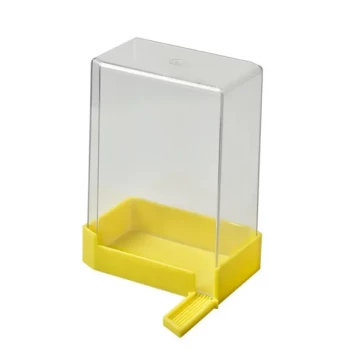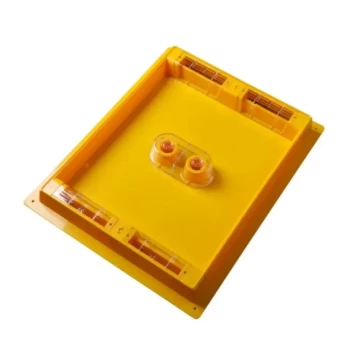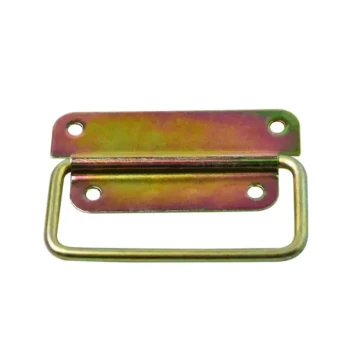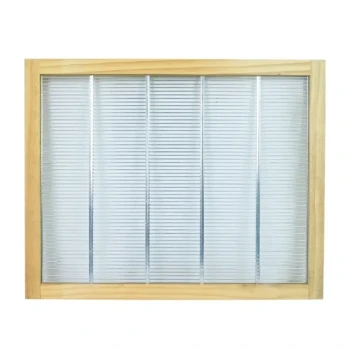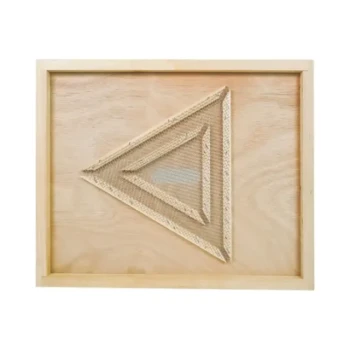The fundamental reason clear glass containers are preferred for bee feeders is for immediate visibility. This simple design choice allows a beekeeper to assess the feeder's syrup level at a glance, determining if it needs refilling without disturbing the hive.
The preference for clear containers is not about aesthetics; it is a critical feature for responsible colony management. It ensures a consistent food supply during the most vulnerable periods, directly preventing the risk of colony starvation.
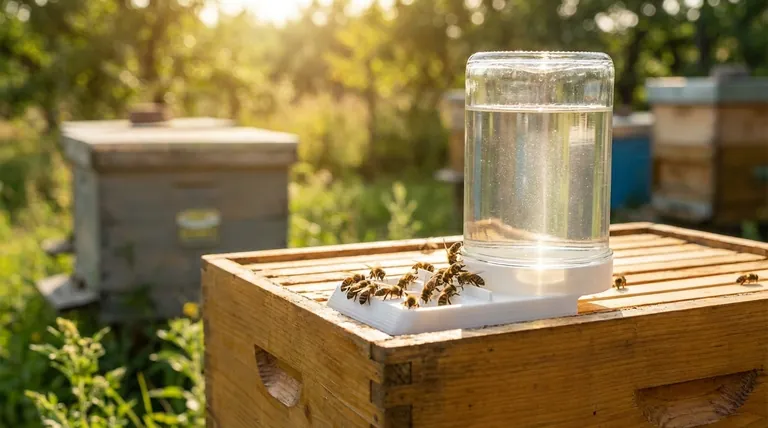
The Critical Role of Visibility in Management
Effective beekeeping often relies on gathering the most information with the least amount of intrusion. A clear feeder is a perfect example of this principle in action.
Monitoring Food Levels Without Disruption
Every time a hive is opened, it breaks the propolis seal, disrupts the colony's temperature regulation, and causes stress to the bees.
A clear glass feeder allows a beekeeper to walk by and instantly know the status of the colony's supplemental food source from a distance.
This quick visual check eliminates the need to open the hive just to see if the feeder is empty, preserving the colony's delicate internal environment.
Identifying Contamination Early
Beyond just checking the volume, a clear view helps you monitor the quality of the sugar syrup. You can easily spot signs of fermentation, mold, or drowned bees, which can spoil the food and harm the colony.
When Supplemental Feeding Becomes a Lifeline
Feeders are not used year-round. Their importance spikes during two specific periods when the colony's survival is at stake.
Establishing a New Colony
When a new bee colony is first established, it has no stored honey and a small workforce.
A consistent, readily available food source via a feeder is crucial for them to build wax comb, raise young bees (brood), and rapidly build the population needed to survive. An empty feeder at this stage can halt all progress.
Surviving the Cold Months
During late fall and winter, natural nectar sources disappear. The colony must survive entirely on its stored honey.
If their stores are insufficient, a feeder provides the essential calories they need to generate heat and survive until spring. Letting a feeder run dry during a cold snap can be catastrophic.
Understanding the Trade-offs
While clear glass is the standard, it's worth understanding the alternatives and potential downsides.
Glass vs. Plastic
Glass is inert, meaning it won't leach chemicals into the syrup. It is also highly durable and easy to sanitize thoroughly between uses. Its primary drawback is that it can break if dropped.
Plastic feeders are lighter and won't shatter, but they can degrade over time with UV exposure. Scratches in the plastic can also harbor bacteria, making them more difficult to keep sterile.
The Downside of Sunlight
The very clarity that makes glass ideal can have a minor drawback. Direct sunlight hitting the sugar syrup can sometimes accelerate fermentation or promote algae growth. This simply reinforces the need for regular cleaning and placing feeders in a shaded location if possible.
Making the Right Choice for Your Goal
Your specific beekeeping goal will determine how you approach feeding.
- If your primary focus is establishing a new colony: A clear feeder is non-negotiable to ensure an uninterrupted flow of food for rapid comb and population growth.
- If your primary focus is overwintering a mature colony: A large-capacity clear feeder is essential for monitoring food levels without repeatedly opening the hive and exposing the bees to cold.
Ultimately, a clear feeder transforms a simple container into a vital window into the health and security of your colony.
Summary Table:
| Feature | Benefit for Beekeeping |
|---|---|
| Instant Visibility | Check syrup levels at a glance without hive disturbance. |
| Early Contamination Detection | Spot mold, fermentation, or drowned bees quickly. |
| Inert Material (Glass) | Prevents chemical leaching, ensuring food safety. |
| Durable & Easy to Clean | Withstands repeated sanitization for colony health. |
| Critical for New Colonies & Overwintering | Provides a lifeline during vulnerable periods. |
Ensure your apiary's success with the right equipment. HONESTBEE supplies commercial apiaries and beekeeping equipment distributors with high-quality, durable bee feeders and essential beekeeping supplies through our wholesale-focused operations. Let us help you maintain healthy, productive colonies. Contact our expert team today to discuss your needs and explore our wholesale catalog!
Visual Guide
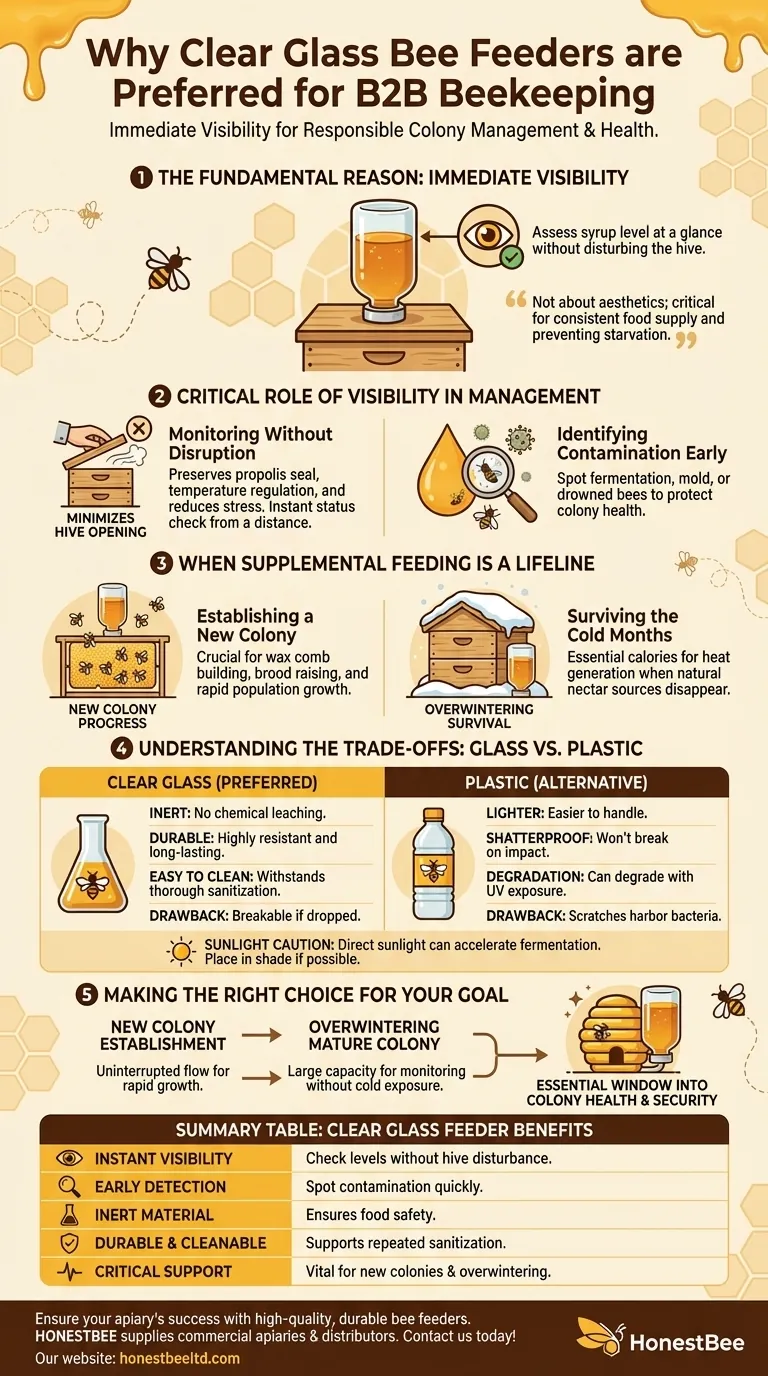
Related Products
- HONESTBEE Entrance Bee Feeder Professional Hive Nutrition Solution for Beekeeping
- Rapid Bee Feeder White Plastic 2L Round Top Feeder for 8 or 10-Frame Bee Hives
- HONESTBEE Entrance Bee Feeder Efficient Hive Front Liquid Feeding Solution for Beekeeping
- Boardman Entrance Bee Feeder Durable Galvanized Steel and Wood Construction for Beekeeping
- HONESTBEE Professional Entrance Bee Feeder Hive Nutrition Solution
People Also Ask
- Are entrance feeders good for bees? Prioritize Hive Health Over Convenience
- What are the common types of honey bee feeders? Choose the Right Feeder for Your Hive
- What is a common problem with hive front feeders? Avoid Robbing Frenzies and Protect Your Hives
- How does the entrance feeder method work? A Guide to Simple But Risky Hive Feeding
- What is an entrance feeder? A Guide to Its Simple Design and High Robbing Risk
